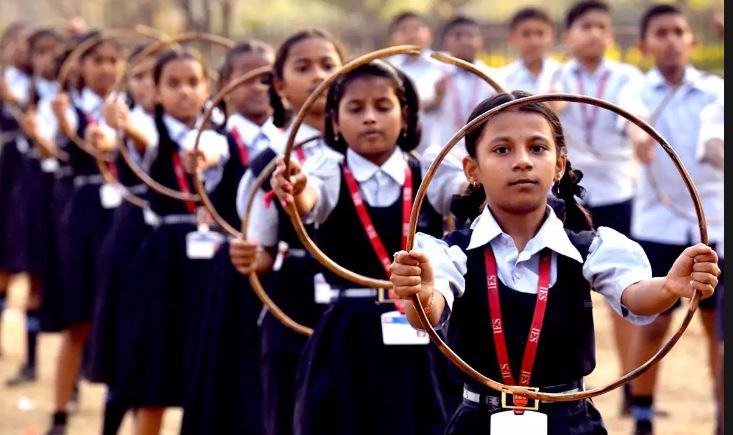News Highlights
Beti Bachao Beti Padhao, the Centre’s flagship programme for women’s empowerment, which focuses on the education of girl children and improving the sex ratio, will now be extended across the country
Key Takeaways
- The programme is operational in 405 districts at present.
- According to the guidelines, the ministry has now targeted:
- Improvement in the Sex Ratio at Birth (SRB) by 2 points every year
- Improvement in the percentage of institutional deliveries at 95% or above
- 1% increase in 1st Trimester ANC Registration per year
- 1 per cent increase in enrolment at secondary education level and skilling of girls and women per year
- The scheme will also look at increasing girls’ participation in sports by identifying talent and linking them with appropriate authorities under ‘Khelo India’.
- The ministry also plans to strengthen One-Stop Centres (OSCs), set up to help women facing violence, including domestic violence and trafficking, by adding 300 OSCs in districts that either have a high rate of crimes against women or are geographically large, preferably in aspirational districts.
- The toll-free, 24-hour women’s helpline, 181, will be merged with the Emergency Response Support System, and other platforms such as the 1098 child line and The National Legal Services Authority (NALSA), will also be connected to OSCs.
Beti Bachao Beti Padhao
Background
- The Census (2011) data showed a significant declining trend in the Child Sex Ratio (CSR) between 0-6 years with an all-time low of 918.
- The principal factor behind the Child Sex Ratio being so adverse is the low Sex Ratio at Birth (SRB).
- Since coordinated and convergent efforts are needed to ensure the survival, protection, and empowerment of the girl child,the Government launched the Beti Bachao Beti Padhao (BBBP) on 22nd January, 2015 at Panipat in Haryana
- It was initiated as a tri-ministerial effort of Ministries of Women and Child Development, Health & Family Welfare and Human Resource Development
- From 2021-22, the Ministry of Skill Development and Entrepreneurship and Ministry of Minority Affairs have also been added as partners.
Objectives of the Scheme
- o prevent gender biased sex selective elimination
- To ensure survival and protection of the girl child
- To ensure education and participation of the girl child
- To increase girl’s participation in the fields of sports
Women issues in India
- As per Census 2011, India’s population was 121.06 Cr and females constituted 48.5% of it. In 2011, the sex ratio (number of females per 1000 males) at all India levels was 943 and the same for rural and urban areas are 949 and 929 respectively.
- Sex-selective abortion
- The Indian census data suggests there is a positive correlation between abnormal sex ratio and better socio-economic status and literacy. Urban India has a higher child sex ratio than rural India according to 1991, 2001, and 2011 Census data, implying a higher prevalence of sex-selective abortion in urban India.
- School dropout
- Drop-out rates among schoolgirls fell to 1.2% at the primary level in 2019-20 while they dropped to 15.1% from 17% in 2018-19 and 18.4% in 2017-18 at the secondary level.
- Unpaid work
- Oxfam India estimated that women and girls put in 3.26 billion hours of unpaid care work each and every day.
- In India, women spend 299 minutes a day on unpaid domestic services while men spend 97 minutes, according to the 2019 National Statistical Survey (NSS) report on time use. This inequality has a direct correlation with participation in the formal economy
- Lack of asset base
- According to Oxfam, there is an acute disparity in asset base in India among gender.
- This is partially due to observance of personal laws, which often gave lesser importance to women’s rights.
- Domestic violence.
- Despite we have Protection of Women from Domestic Violence Act, 2005, the domestic violence are still prevailing
- National Crime Record Beureu’s (NCRB) Crime in India 2019 report, about 70% of women in India are victims of domestic violence.
Pic Courtesy: Economic Times
Content Source: Indian Express and Vikaspedia



